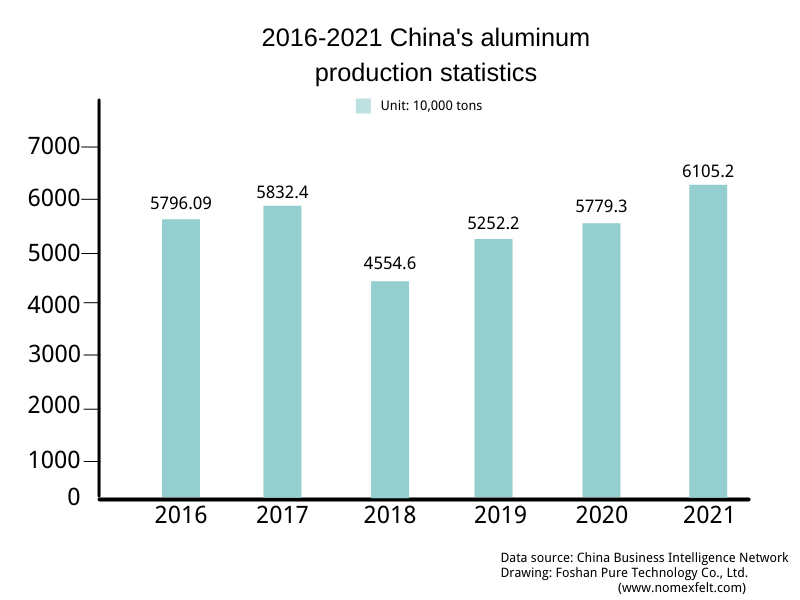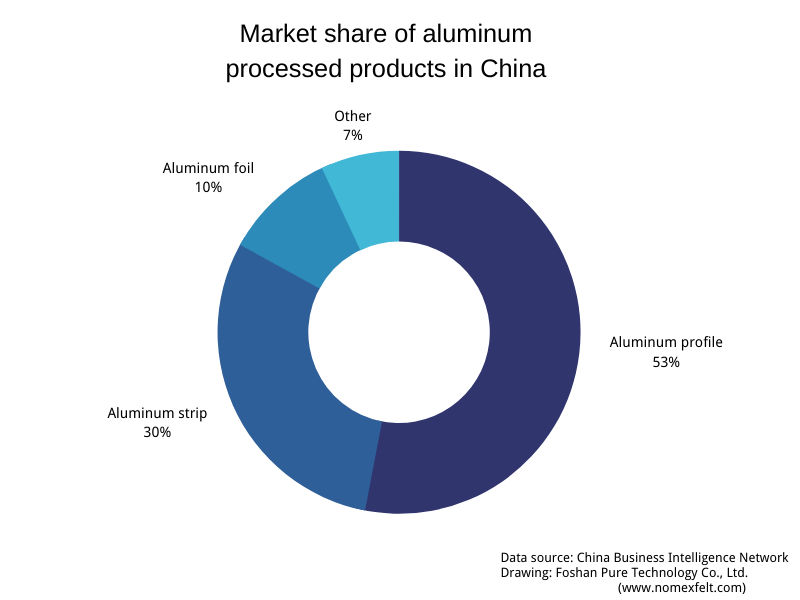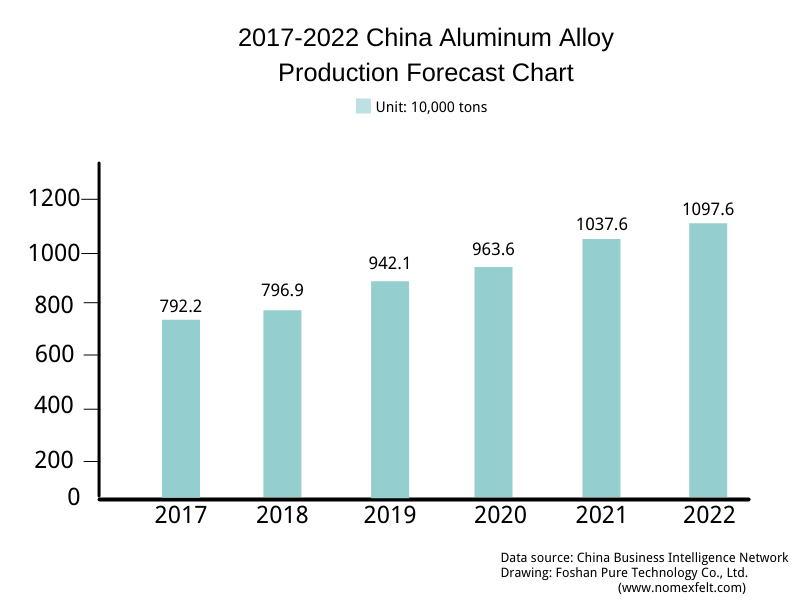What is the development prospect in 2022? Are processed aluminum products worth exporting to China? Or import from China?
Forecast and analysis of China’s aluminum processing market.
Aluminum processing, using plastic processing methods to process aluminum ingots into materials,
The main methods are rolling, extrusion, stretching, and forging.
In recent years, China’s aluminum processing industry has faced problems such as gradually tightening policies, declining profitability, and continuous trade frictions.
Accelerating transformation and upgrading has become the top priority of the development of the aluminum processing industry.
Status of the aluminum processing market
Aluminum processing is the processing of aluminum. The raw material electrolytic aluminum is produced through processes and processes such as casting, rolling, extrusion,
and surface treatment to produce aluminum profiles, pipes, bars, and other extruded materials, plates, strips, foils,
and other flat-rolled materials. As well as various aluminum materials such as casting materials。

In recent years, China’s aluminum processing industry has faced problems such as gradually tightening policies, declining profitability of the aluminum processing market, and continuous trade frictions.
With China’s structural reform of the supply side of the aluminum processing industry, and the technological progress of the aluminum processing industry, and the aluminum smelting industry is developing towards high quality.
As of October 2021, China’s aluminum processing market, China’s aluminum production reached 496.669 million tons, a year-on-year increase of 9.3%.
From the perspective of the structure of aluminum in China, the proportion of aluminum profiles is the highest at 53%,
followed by aluminum strips and foils, which are 30% and 10% respectively.

Economic development promotes people’s pursuit of high-quality life. With a modern economy and high-tech development, the demand for aluminum as a pillar raw material is expected to expand further.
The rapid development of building curtain walls, transportation, power equipment, national defense industry, high-end equipment, packaging, and other industries,
It will continue to increase the consumption of aluminum processing materials, and at the same time, vigorously advocate the expansion of the application of aluminum to replace non-environmental protection and energy-saving materials such as steel, copper, wood, paper, and plastic, etc.
New products, new processes, and new uses of aluminum processing materials will continue to appear, thereby promoting the technological progress of the industry and the sustainable and healthy development of the industry.
The quality of aluminum ingots is improved towards large size and high uniformity;
The process equipment is updated in the direction of short process and automation;
The rolling technology is innovative in the direction of rapid deformation, large deformation, and high precision.
Coupled with the continuous optimization of mold design and processing methods,
The comprehensive performance and service life of materials have been greatly improved, and high-tech products have continued to emerge.
Aluminum alloy is the most widely used non-ferrous metal structural material in the industry. At present,
the aluminum alloy industry has developed into a relatively mature market.
In today’s low-carbon economy has become the general trend, due to the increase in market demand and the improvement of aluminum processing technology,
Aluminum alloys are also widely used in high-end fields such as new energy vehicles, high-speed rail, ships, and aviation.
In the future, the application field of aluminum alloys in my country will continue to expand,
which will further promote the sustainable development of the aluminum processing industry.

Aluminum alloy
Aluminum alloys have a series of excellent properties, such as easy processing, lightweight, good electrical conductivity, etc.
And its relatively low cost makes it an alternative to steel, copper, and other materials.
Aluminum profile
Aluminum profiles are mainly used in construction and industrial fields and can be divided into two categories: architectural profiles and industrial profiles.
Architectural profiles are mainly used in the construction and real estate industries. In the consumption field of various types of architectural aluminum profiles, aluminum alloy doors, windows, and curtain wall profiles account for the main body.
Industrial aluminum profiles are mainly used in four fields: transportation, mechanical and electrical equipment, durable goods, and electronic appliances.
Aluminum profile processing includes aluminum extrusion, which is molding various aluminum alloy materials into specific shapes.
Heat-resistant felt conveyor belts are required to transport aluminum materials in the aluminum extrusion process.
For example, Nomex felt, Kevlar conveyor belt, PBO roller tube, high temp roller, heat resistant felt.
To inquire about the price of the Felt for Aluminum profile manufacturer, you can >>CONTACT US. Mail:[email protected]
Facebook: https://www.facebook.com/nomexfelt
Linkedin: https://www.linkedin.com/company/nomexfelt
Instagram: https://www.instagram.com/nomexfelt/
As we know, Heat Transfer Printing Felt is suitable for fabrics, decorative fabrics, curtains, le...
Read Safety Rules for Laundry Management to be a qualified manager. PARTⅠ Laundry room Safety Gen...
The extrusion machine is the leading equipment for the production of aluminum profiles. The quali...
Heat transfer printing is a contemporary printing process in the clothing market. It prints the p...
In the textile industry, felt is only a small part but important. About how to choose felt that i...
Foshan Pure Technology Company., Ltd. helps conveyor belt manufacturers source equipment to metal...
Nomex, an intermediate aramid, also known as aramid 1313. It is characterized by good heat resist...
In the 1960s, the Dupont developed a kind of aramid composite material, it is Kevlar. It has very...